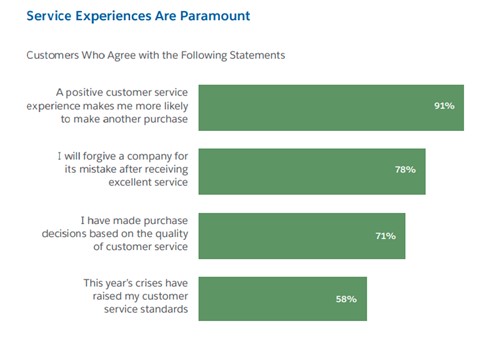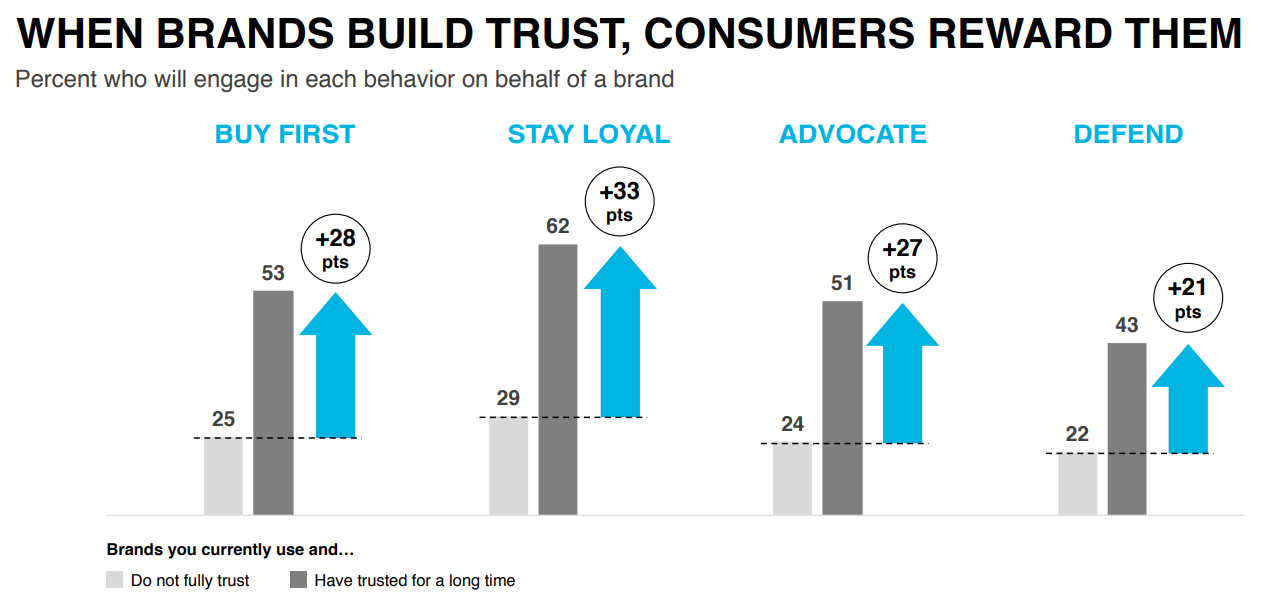Secrets to Building a Great Field Service Brand

In a world where competition is just a click away, building a remarkable field service brand is the key to standing out from the crowd.
It’s not about superficial elements like logos and taglines; rather it’s about creating a deep connection with your customers.
A weak brand in the field service industry can leave you lost in a sea of similar providers. Customers seek something that sets the service providers apart, earns their trust, and captures their attention.
A strong brand becomes a beacon of trust, guiding customers to choose you over the competition. It creates a loyal following, with customers who appreciate your services and keeps returning for more.
So, how do you build this remarkable field service brand? It starts with truly understanding your customers. Dive deep into their needs, preferences, and challenges.
In this blog, we will unveil the secrets to building a remarkable field service brand that resonates with customers and inspires loyalty. We will delve into the brand-building strategies and tactics that successful field service companies have employed to establish themselves as trusted industry leaders.
Find Your Tribe and Win Their Hearts
We got it, you have a unique field service solution that can truly make a difference in people’s lives.
But here’s the catch – not everyone is going to be interested.
So, instead of trying to appeal to everyone, you need to find your niche, your specific group of people who will truly appreciate what you have to offer.
Lindsey Myers, the founder of Concrete Blonde Consulting, wisely suggests, “At the beginning, most people have a pretty good idea of who will use their product/service. The more specific you can get [with your strategy], the easier it is to reach those people for less money … and also to find new audiences and grow.”
But it’s not just about cost efficiency; knowing your audience helps you conduct market analysis, understand their needs and interests, and improve your brand building strategy.
Understanding your target market means focusing your efforts on the right audience, increasing conversion rates, and optimizing your marketing budget.
Below are the steps that can help you effectively identify your target audience, better understand their needs and preferences, and align your brand strategy accordingly.
Conduct Market Research
Why does research matter? Well, it’s simple.
If you don’t deeply care about your customers, someone else will capture potential customers who resonate with their understanding of their needs.
As Bernadette Jiwa, Founder of The Right Company, says, “Whoever gets closer to the customer wins.”
There are various methods to conduct market research, and you can mix and match them based on your goals. Here are four standard techniques:
- Surveys: Ask questions to a group for quick, valuable data.
- Interviews: Connect one-on-one for empathy and ‘Aha!’ moments.
- Focus groups: Discuss with a targeted group for deep insights, but watch for biases.
- Observation: Observe customer interactions for powerful insights.
Meet Your Customers’ Alter Egos
User personas are like imaginary characters representing different customer types.
These personas are based on accurate data collected from surveys and interviews with people who use services similar to yours.
Let’s meet John and Sarah!
Let’s create two user personas for a field service provider. John is a busy property manager focused on efficient maintenance for residential buildings. His main challenge is finding reliable service providers who respond quickly.
Sarah, an HVAC contractor, aims to expand her client base and establish a reputation for quality work. Her main obstacle is standing out in a competitive market.
By creating these personas, you can better understand your customer’s needs, goals, and challenges.
To create personas, follow these steps:
- Gather data: Use surveys and interviews to learn about your customers.
- Identify patterns: Look for common traits and similarities in the data.
- Create personas: Develop fictional characters representing different customer types.
- Use personas for decision-making: Consider their preferences when making business choices.
- Update personas regularly: Keep them current as you learn more about your customers.
Speak the Language of Your Customers
It’s like customizing a suit to fit perfectly. To create a strong connection with your audience, think about personalization.
Just like we each have our preferences, consumers appreciate a personalized experience. Research shows that simple logos resonate the most because we assign meaning to shapes, colors, and images based on our biases.
Remember, your diverse audience includes customers, employees, media, influencers, and stakeholders. Craft messages that appeal to each group’s specific interests and concerns.
Adapt the length and format of your content, but keep the underlying message consistent. A well-planned brand strategy will make your services more relatable and resonate with your target audience.
Go Beyond Answers and Solutions!
Have you ever stopped to think about the incredible power of exceptional customer service? It goes far beyond simply answering questions and solving problems.
It can be the difference between a successful brand and one that fades into obscurity.
It’s time to challenge conventional wisdom and realize that delivering exceptional customer service is not just a nicety– it’s a necessity.
According to a Khoros survey, businesses underestimate the frequency of poor customer experiences by an average of 38%. This highlights the need to be more in touch with your audience and address their concerns effectively.
Excellent customer service doesn’t just benefit trust and engagement – it helps the bottom line and can even restore lost trust. The below survey suggests that positive customer service is worth taking care of.

Source: Salesforce
Implement effective communication channels:
Choosing the right communication channels is crucial in achieving this goal. By considering your message, audience preferences, and brand values, you can create a personalized customer service experience across all channels.
- CRM Systems: CRM systems can integrate with various communication channels, such as phone calls, emails, and social media, allowing field service brands to engage with customers through their preferred channels.
- Mobile Apps: With features like real-time updates, in-app messaging, and push notifications, mobile apps provide convenience and transparency, enhancing the overall customer experience.
- Live Chat: With live chat, customers can get immediate assistance, ask questions, and receive prompt responses from customer service representatives or field technicians.
- Augmented Reality (AR) Support: Through AR support, customers can use their smartphones or tablets to visualize and understand complex equipment, installations, or repairs. Field technicians can guide customers remotely, overlaying digital information and instructions onto real-world objects.
Connecting these communication channels with your brand’s values and objectives can create a cohesive and customer-centric service experience that differentiates your field service business and fosters long-term customer loyalty.
Train and Empower Field Service Technicians
To deliver exceptional customer service in the field service industry, it is crucial to train and empower field service technicians effectively.
Let’s start with what Jillana Peterson, principal operations manager at Zendesk, said, “The nature of the work is helping frustrated people in situations that are confusing at best or impossible at worst. Never take it personally, and know you can help simply by listening with an empathetic ear.”
By providing technicians with the necessary soft and technical skills and knowledge, you can ensure they meet the rising customer expectations.
Here are four ways to achieve this:
- Gamified Training: Develop interactive and gamified training modules that engage technicians through challenges, simulations, and rewards, making the learning process more enjoyable and motivating.
- Virtual Reality (VR) Training: Utilize VR technology to create immersive training experiences where technicians can practice real-life scenarios in a simulated environment, enhancing their technical and problem-solving skills.
- Mobile Learning Apps: Create mobile apps that deliver bite-sized training content, allowing technicians to access knowledge resources on the go, enabling continuous learning and quick reference.
- Peer-to-Peer Shadowing: Establish a program where technicians can shadow and learn from experienced peers, gaining practical insights and field service best practices.
Measure and Monitor Customer Satisfaction
Delivering exceptional customer service is no longer a luxury; it has driven business success.
In the competitive world of field service, where branding plays a pivotal role, every interaction with customers is an opportunity to strengthen your brand and leave a lasting impression.
However, the traditional methods of measuring and monitoring customer satisfaction often fall short, leaving service providers grappling in the dark.
To enhance service quality and align it with your brand image, let’s explore four practical ways to measure and monitor customer satisfaction:
- Customer Surveys: This invaluable data enables you to tailor your service delivery to meet their expectations, reinforcing your brand’s commitment to exceptional customer service.
- Net Promoter Score (NPS): By actively monitoring your NPS, you can proactively address any issues and further strengthen your brand’s reputation.
- Customer Reviews and Testimonials: Positive reviews and testimonials also serve as powerful social proof, reinforcing your brand’s commitment to delivering exceptional service.
- Employee Feedback: Regular communication and involving employees in the improvement process empower them and foster a customer-centric culture, aligning your brand and service delivery.
Building Trust and Credibility
“We, as humans, tend to trust what other humans say and do, so trust is easy to develop but extremely difficult to maintain – and ridiculously easy to lose,” said Don Scultz, a global marketing communications expert.
These words capture the essence of a fundamental truth: trust is a fragile yet invaluable asset in business. Nowhere is this truer than for the field service brands, where trust forms the bedrock of success.
According to the 2020 Edelman Trust Barometer Special Report, an overwhelming 70% of respondents emphasized the increasing importance of trust in a brand in today’s landscape.
And when customers trust your brand, they willingly champion your services, becoming invaluable assets in building credibility and attracting new business. Through their advocacy, trust grows stronger, creating a virtuous cycle of trust, loyalty, and continued success.

Source: Haiilo
To fortify your brand and gain that trust, you need to deploy effective strategies. Let’s start with a few significant ones.
Certifications, Awards, and Industry Affiliations:
- Participate in award programs and competitions to gain recognition for outstanding services.
- Join industry associations and organizations to demonstrate your commitment to professional standards.
- Highlight these certifications, awards, and affiliations prominently on your website and marketing materials.
- Use logos or badges to reinforce your credibility and expertise visually.
- Provide brief explanations of the significance of each certification or award to educate customers about your accomplishments.
Customer Testimonials and Case Studies:
- Request feedback from satisfied customers and ask permission to use their testimonials in your marketing materials.
- Create case studies highlighting specific challenges customers face and how your field service solutions provided successful outcomes.
- Incorporate customer testimonials on your website, social media platforms, and other marketing channels.
- Encourage customers to share their experiences through online reviews and ratings on platforms like Google, G2, or industry-specific directories.
Honesty, Transparency, and Accountability:
- Communicate your service offerings, pricing structure, and any upfront limitations or exclusions to customers.
- Provide detailed contracts or service agreements that outline expectations, deliverables, and timelines.
- Proactively communicate any changes or delays affecting your customers, and provide alternative solutions or compensations when necessary.
- Establish a customer support system that allows customers to reach out with questions or concerns easily.
- Admit and take responsibility for any mistakes or shortcomings and provide prompt resolutions or compensations.
The Crossroads of Technology, Brand, and Innovation
The tech train stops for no one. But this is nothing new.
In the world of field service, the race to success is not won by those who resist change but by those who embrace technology. Let’s understand with a case study.
For Indonesian mining company Petrosea, survival depended on embracing digital transformation. In 2018, they implemented a three-pronged strategy focusing on diversification, digitization, and decarbonization.
They achieved remarkable results by utilizing advanced technologies like AI, smart sensors, and machine learning at their Tabang project site in East Kalimantan, Indonesia. By leveraging predictive analytics as a service, Petrosea was able to anticipate equipment failures, reduce breakdowns, cut costs, and increase production through predictive maintenance powered by smart sensors.
According to Indradjaya, company director, “Technology enabled us to innovate our business model and remain relevant. A digital mindset now percolates through every aspect of the company.”
By embracing digital transformation, Petrosea demonstrated its commitment to leveraging technology to provide efficient and reliable field services, enhancing its brand reputation in the industry. Below are the strategies you should implement:
Utilize FSM software:
A reliable field service management software streamlines operations by automating tasks like scheduling, dispatching, and tracking. As a result, businesses experience enhanced efficiency, minimized errors, and deliver exceptional customer experiences. The benefits of using technology in branding include:
- Enhanced efficiency: Streamlined operations enable service providers to deliver prompt and efficient service, leaving a positive impression on customers.
- Improved reliability: Using software and automation ensures that service providers can consistently deliver on their promises, building trust and a reputation for reliability.
- Exceptional customer experiences: Service providers can provide seamless and hassle-free experiences by automating processes, and enhancing satisfaction and loyalty.
- Increased productivity: Automation frees up time and resources, allowing service providers to handle more requests and increasing productivity and growth.
Integrate mobile apps and Internet of Things (IoT) devices:
Implementing mobile apps and IoT devices can revolutionize field service operations.
Develop a mobile app that enables field technicians to access real-time information, update job statuses, and communicate with the back office effortlessly. This enhances productivity, reduces paperwork, and ensures prompt and accurate service delivery.
Install sensors and connected equipment as part of your service offerings. These devices can collect data on equipment performance, allowing for proactive maintenance and early detection of issues. By addressing problems before they escalate can minimize customer downtime and improve service reliability.
Leverage data analytics:
Leveraging data analytics improves operational efficiency and enhances the overall customer experience.
By utilizing data-driven insights, field service providers can align their services with customer preferences and anticipate their needs, leading to higher customer satisfaction and loyalty.
Additionally, by communicating their data-driven approach to customers, service providers can build a brand image of reliability, transparency, and a customer-centric mindset.
These efforts to leverage data analytics contribute to the establishment of a great field service brand building strategy that will make a brand efficient, responsive, and committed to delivering exceptional experiences.
Stay updated with emerging technologies:
Staying updated with emerging technologies is vital for field service providers to maintain a competitive edge and build a strong brand. By being aware of the latest advancements, businesses can identify opportunities to enhance their operations, deliver exceptional service, and differentiate themselves in the market.
Stay updated with emerging technologies:
- Actively monitor the market for new advancements.
- Attend industry conferences and events to learn about the latest technologies.
- Collaborate with technology partners and vendors to explore innovative solutions.
Consistency and Brand Identity
In the world of field service, where reliability and trust are paramount, there’s a silent struggle that many providers face.
It’s the challenge of establishing a strong brand identity that truly resonates with customers.
While logos and slogans may seem like the keys to success, there’s so much more to it.
As Jon Holbrook, ex-Product Marketing Manager at Mailchimp, points out, “Having a unified bAddressinggoes a long way toward helping you connect with your target audience. When you communicate your brand message consistently, your marketing is more persuasive and credible, which drives business results.”
It’s about crafting a personality that amplifies the core elements of your brand’s DNA.
So, how can field service providers create a brand identity that stands out and leaves a lasting impression?
Create brand guidelines:
To create brand guidelines for consistent visual and verbal communication, consider the following elements of brand building:
- Set brand guidelines: Start by creating clear rules and standards for your visual and written materials. By conducting this preliminary work, you can maintain focus when launching new campaigns and guarantee that you consistently deliver on your brand promise.
- Tone and voice: Determine your brand’s personality and define its essential traits. Tailor your tone and voice to reflect these traits.
- Color palette: Select a dominant color and complementary tones for a secondary palette.
- Logo: Set rules for displaying your logo in different formats.
Following these guidelines, you can create a recognizable brand signature and deliver a consistent brand experience across all channels.
Regularly audit brand touchpoints:
To ensure consistency across all channels, regularly auditing brand touchpoints is essential. Explore why this is important and provide five simple steps to conduct a brand touchpoint audit.
- Identify customer touchpoints: Document and evaluate all interactions where customers engage with your brand.
- Inventory physical marketing materials: Create a comprehensive list of brochures, business cards, and signage used in customer interactions.
- Manage branded materials: Compile a list of branded non-marketing items like vehicles, clothing, and equipment.
- Account for digital assets: Include your website, social media accounts, and email signatures in the brand audit.
- Assess how your brand appears on social media and third-party sites and analyze online and offline engagement metrics—especially if you’re exploring strategies related to online marketing for service industries, where digital presence directly impacts lead generation and trust.
By following these steps, you can maintain a consistent brand image throughout customer touchpoints in the field service industry, building trust and standing out from competitors.
Conclusion
Building an excellent field service brand is no easy task, but the rewards are well worth the effort. Throughout this article, we’ve uncovered some valuable secrets to help you on your journey. From delivering exceptional customer experiences to embracing technology like FieldCircle, each secret plays a crucial role in shaping your brand’s success.
Remember, a strong field service brand sets you apart from the competition, instills trust in your customers, and establishes long-lasting relationships. By consistently delivering high-quality service, you meet customer expectations and exceed them, earning their loyalty and positive word-of-mouth.
Now that you’re armed with these secrets, it’s time to take action. Don’t let them remain mere.


